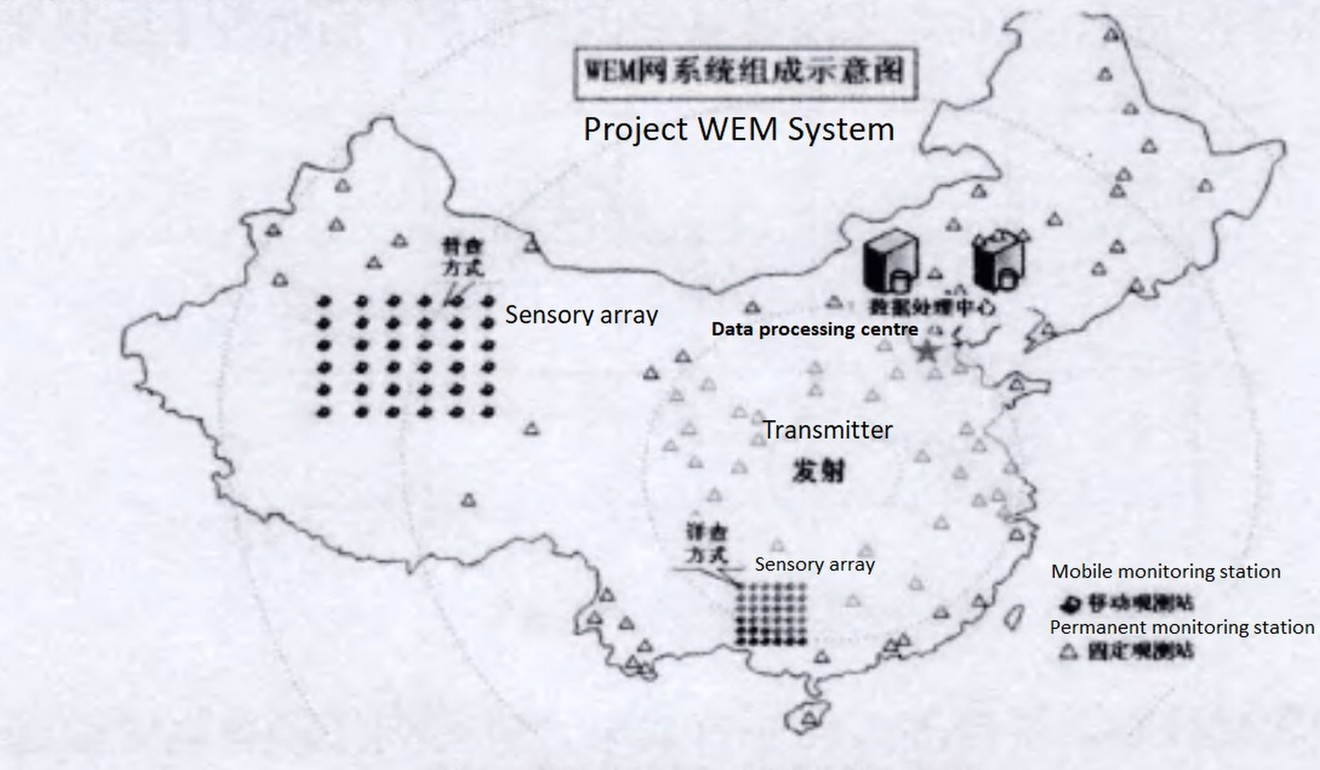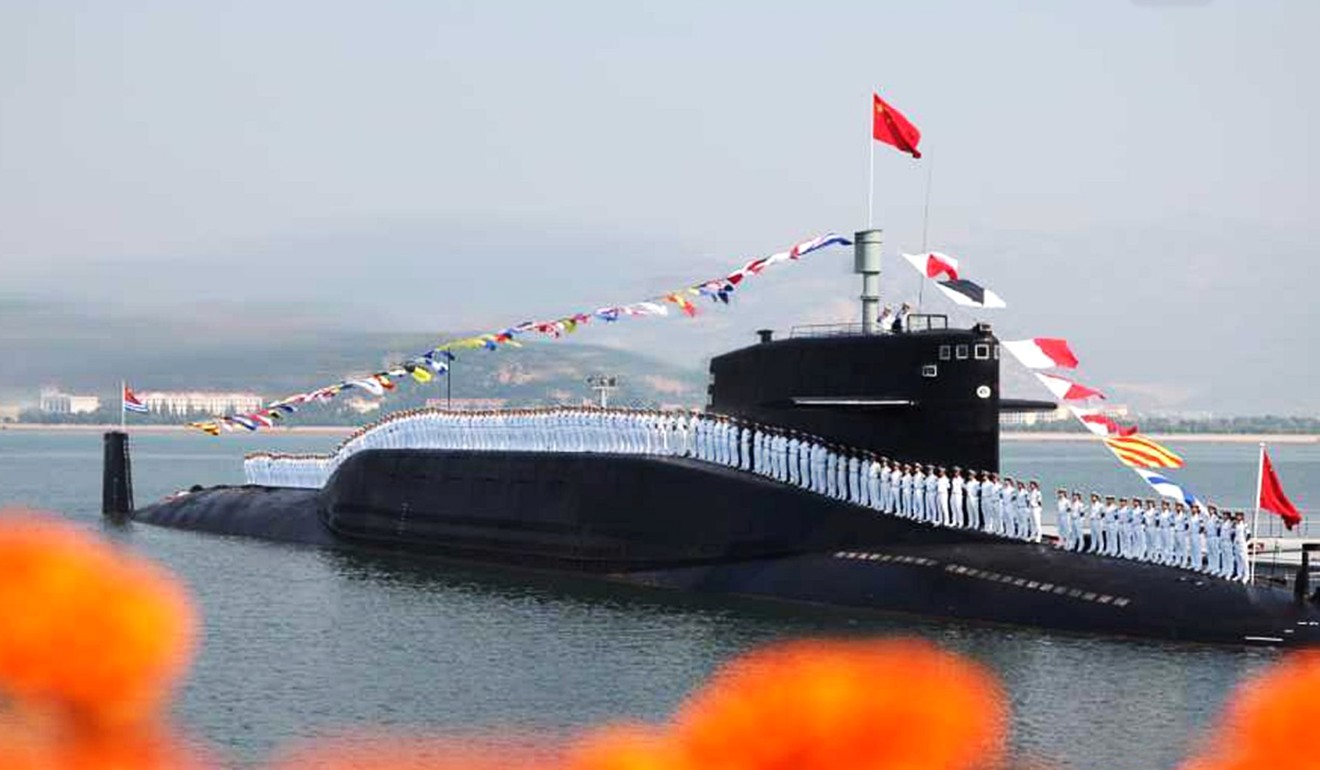China has built a giant experimental radio antenna on a piece of land almost five times the size of New York City, according to researchers involved in the highly controversial project.
The Wireless Electromagnetic Method (WEM) project took 13 years to build but researchers said it was finally ready to emit extremely low frequency radio waves, also known as ELF waves.
Although the project has civilian applications – officially it will be used for earthquake and mineral detection and forms part of
China’s 11th five-year plan – it could also play a crucial role in military communications.
Scientists said its transmissions could be picked up by a submarine lurking hundreds of metres below the sea, thereby reducing the risk of having to resurface to pick up transmissions.
The project follows the construction of China’s first military-grade Super Low Frequency transmission station in 2009.
The next year, a Chinese nuclear submarine successfully communicated with the station from deep water – making China the third country in the world to have established such a submarine communication system after the United States and Russia.
But the Chinese navy is eager to expand its capacity and has been pouring resources into the more advanced ELF radio technology, which allows submarines to communicate with the command centre from a greater depth and is harder to disrupt.
The Chinese government, however, has played down the importance of the facility, which occupies some 3,700 sq km (1,400 square miles) of land, in information released to the public.
Apart from the need to protect an important strategic asset, some researchers said the secrecy was to avoid causing public alarm.
The antenna would emit ELF signals with a frequency of between 0.1 to 300 hertz, the researchers said.
The exact site of the facility has not been disclosed, but information available in Chinese research journals suggests it is in the Huazhong region, an area in central China that includes Hubei, Henan and Hunan provinces and is home to more than 230 million people – greater than the population of Brazil.
Project WEM’s main surface structure is a pair of high voltage power supply lines stretching from north to south, east to west on steel lattice towers, which form a cross that is 60km (37 miles) wide and 80km to 100km long.
At the end of each power line, thick copper wire goes underground through a deep borehole. Two power stations generate strong currents and electrify the ground in slow, repeating pulses, turning the earth underfoot into an active source of electromagnetic radiation.
The radio pulses not only pass through the atmosphere, but travel through the Earth’s crust as well, with a range of up to 3,500km, according to the project scientists.
A sensitive receiver within that range, which is roughly the distance between China and Singapore or Guam, would be able to pick up these signals.
The closer to the power source, the stronger the pulses.
The radar will be difficult for spy satellites to detect because it will appear no different to an ordinary power grid, although a radar expert said it might be possible to detect its emissions and use those to determine the location.
The inland location of the new facility would also make it harder for an enemy to attack compared with a facility located on the coast.
Though I am involved in the project I have no idea where it is
CHEN XIAOBIN, RESEARCHER AT CHINA EARTHQUAKE ADMINISTRATION
Chen Xiaobin, a researcher with the Institute of Geology, China Earthquake Administration, has been working on the project and said he did not know its exact location because that information needed a high level of security clearance.
“This facility will have important military uses if a war breaks out … Though I am involved in the project, I have no idea where it is. It should be up and running by now,” he said on Wednesday.
Lu Jianxun, the chief scientist on the project, also leads a key communication programme at the PLA Naval Command, according to information on Chinese government websites.
The construction work was led by 724 Research Institute under the China Shipbuilding Industry Corporation, which is a major supplier of communications and electronic warfare equipment to the Chinese navy.
Hu Wenmin, president of the corporation, visited the emission site in May last year, according to a statement on the state-owned company’s website.
Hu “expressed his appreciation for the construction of the WEM project and put forward opinions and requirements for the follow-up development of the project and the technical application in related fields”, the statement said.
But the project has caused concern among some academics who are worried about the possible impact on public health.
The International Agency for Research on Cancer, part of the World Health Organisation, previously warned that ELF waves were “possibly carcinogenic to humans”.
Numerous epidemiological and experimental studies conducted by researchers around the world have linked long-term ELF exposure to an increased risk of childhood leukaemia.
In a 500-page report constantly updated since 2007, the WHO has documented a large number of academic investigations linking ELF radiation to a range of illnesses including delusions, sleep deprivation, stress, depression, breast and brain tumours, miscarriages and suicide.
Though many results remain inconclusive, the WHO said the implementation of precautionary procedures to reduce exposure was “reasonable and warranted”.
Chen declined to comment on the impact the facility would have on residents’ health.
But some researchers said China’s environmental authorities have concerns about the project.
The Ministry of Ecology and Environment, for instance, asked for a comprehensive review on its environmental impact – a request that has not been granted.
“The money came from civilian budgets, but the military has intervened and muted the ministry’s complaint,” said a Beijing-based researcher, who requested not to be named due to the sensitivity of the issue.
The ministry did not respond to a request for comment.
According to one calculation by the Chinese navy, a person standing on the emission site will be subject to ELF radiation no greater than 10 watts, enough to power up several LED light bulbs.
But Qiao Fengshou, a researcher with the navy’s Ship Communication Research Institute in Wuhan, who made the estimate, said there was nothing to worry about.
According to China’s safety standards, only radiation greater than 300 watts is considered harmful, so the project will cause “no harm to staff and residents in surrounding areas, it is not necessary to build extra facilities for the purpose of health protection”, Qiao wrote in an article in Chinese-language research journal Ship Science and Technology in 2016.
Qiao also said the project would be given an “exemption from supervision” by the environmental authorities.
Xi Jilou, a researcher with the Institute of Earthquake Forecasting, who was informed of but not directly involved in the project, said relevant authorities had recently conducted final checks on the emission site and concluded it was ready for operation.
“There should be some devices monitoring the environment on the site for the protection of public health,” Xi said.
“China is not the first country doing this. Other countries conducted similar projects long ago.”
In 1968, the US Navy proposed Project Sanguine, a giant ELF antenna that would have covered two-fifths of the state of Wisconsin to enable undersea communications with submarines.
There should be some devices monitoring the environment on the site
XI JILOU, RESEARCHER AT INSTITUTE OF EARTHQUAKE FORECASTING
The project was terminated due to massive protest by residents.
The US Navy built a smaller transmitter, the Wisconsin Test Facility, with two 45km power lines in the Clam Lake area, a place with a low population density. The station emitted ELF waves at 76 hertz and was decommissioned over a decade ago.
In the 1980s the Soviet Union constructed Zevs, a considerably more powerful facility on the Kola Peninsula inside the Arctic Circle.
The Zevs antenna was powered by two 60km electric lines and had a main frequency turned at 82 hertz. The radio waves it produced were believed powerful enough to reach Russian nuclear submarines hidden deep under the Arctic ice cap.
Russia has since provided technical support to China as it started building its own systems, which may include other ELF stations in coastal areas.
According to the WHO, an ELF field can affect human nerve fibres and stimulate synaptic transmissions in neural networks.
It can also affect retina cells, generating a sporadic flash of light in people’s eyes.
Animals can use low frequency signals to detect threats or changes in surrounding environments, an ability critical for survival in nature, according to some biologists, and experiments suggest that ELF radiation could also have an effect on cattle.
Huang Zhiwei, professor with the department of electrical engineering at Nanhua University in Hengyang, Hunan, said the ELF radio was unlikely to cause acute damage to the human body due to its enormous wavelength, which could stretch over thousands of kilometres, but it might interfere with the sensory organs.
“If the frequency caused a resonance with our sensors it could be a nightmare,” said Huang, who was concerned because he and his family live in the region.
Some previous studies had shown that wounds healed more slowly when exposed to ELF radio waves several times a day, Huang added.
Huang, who has taken part in numerous military research projects, said the environmental impact of defence-related facilities was usually not scrutinised as much as civilian projects.
“The matter must be handled with extreme caution, or it can easily lead to public panic,” he said.
Huang said the authorities in charge of project WEM should recruit a large number of volunteers for comparison studies.
The sample size must be sufficiently large because of variations in environment and timing or the individuals involved could produce different results.
“Some people are more sensitive. They can see or hear things other people can’t. They may be more vulnerable to the impact,” Huang said.
Researchers also said the facility would also have a peacetime application and be used to detect mineral and oil deposits.
Ground stations with special equipment can pick up signals to survey underground structures to an unprecedented depth.
The ELF waves will also be able to detect rock deformations, which could help in studying precursors for major earthquakes.
In 2013, China’s state media reported that the PLA Navy had completed the development of the world’s most powerful and sensitivity low-frequency communication system for nuclear submarines.
The reports described the technology as having the world’s largest communication distance and deepest communication depth, according to the official report.
The US Navy shut down its Wisconsin transmitter in 2004, saying it no longer needed to rely on ELF radio.
Instead, US nuclear submarine fleets use very low frequency or VLF radio waves, with a frequency ranging from 3 to 30 kilohertz, for long-distance communication.
The VLF radio waves can carry more information than ELF signals because of this higher frequency, and can penetrate seawater to a depth of up to 40 metres (130 feet).









No comments:
Post a Comment